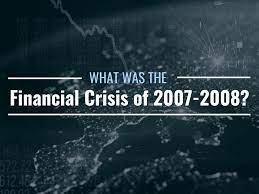On October 6, 2008, the world was reeling from the effects of a global financial meltdown that had begun to unfold in the previous months. The collapse of Lehman Brothers, a prominent investment bank, in September 2008 had sent shockwaves throughout the financial system, triggering a domino effect that had severe repercussions for economies around the world. The financial crisis of 2008 was a result of a complex web of factors, including excessive risk-taking, lax regulation, and the proliferation of complex financial instruments. The bursting of the United States housing bubble, fueled by subprime mortgage lending, was a key catalyst for the crisis. As home prices plummeted and defaults on mortgage payments soared, financial institutions that had invested heavily in mortgage-backed securities suffered significant losses. The effects of the financial meltdown were felt far beyond the borders of the United States. The interconnectedness of the global financial system meant that the crisis quickly spread to other countries. Stock markets around the world plummeted, credit markets froze, and banks faced severe liquidity issues. Confidence in the financial sector evaporated, leading to a loss of trust among investors and consumers alike. The impact of the crisis varied from country to country, but no nation was left unscathed. In Europe, several countries faced severe economic challenges. Iceland, for example, experienced a banking collapse that was among the most severe in history. Its three largest banks failed, leading to a deep recession and a bailout from the International Monetary Fund (IMF). In the United Kingdom, major financial institutions such as Royal Bank of Scotland and Lloyds Banking Group faced significant losses and had to be bailed out by the government. The crisis also had a profound impact on the Eurozone, with countries like Greece, Spain, and Ireland facing severe debt crises in the subsequent years. In Asia, countries heavily reliant on exports, such as Japan and South Korea, experienced a sharp decline in demand as global trade contracted. China, which had been experiencing rapid economic growth, saw its export-oriented industries suffer, leading to a slowdown in its economy. Developing countries were not immune to the crisis either. Many experienced a sharp decline in foreign investment, reduced access to credit, and a drop in commodity prices, which had a significant impact on their economies. In Africa, for example, the crisis hindered progress in poverty reduction and development efforts. The effects of the financial meltdown were not confined to the financial sector and the economy. The crisis had far-reaching social and political consequences as well. Unemployment rates soared, leading to social unrest and political instability in some countries. Governments around the world implemented various measures to mitigate the impact of the crisis, including stimulus packages, bank bailouts, and regulatory reforms. The global financial meltdown of 2008 was a wake-up call for the world. It exposed vulnerabilities in the financial system and highlighted the need for stronger regulation and oversight. It also underscored the interconnectedness of economies and the importance of international cooperation in addressing financial crises. October 6, 2008, serves as a stark reminder of the devastating effects of the financial crisis on economies around the world. The crisis exposed deep-rooted flaws in the global financial system and led to a period of economic uncertainty and hardship for millions of people. While significant steps have been taken to strengthen the financial system since then, the lessons learned from the crisis continue to shape economic policies and regulations to this day.
6 Oct, 2008 Finance Meltdown Effects Around The World
